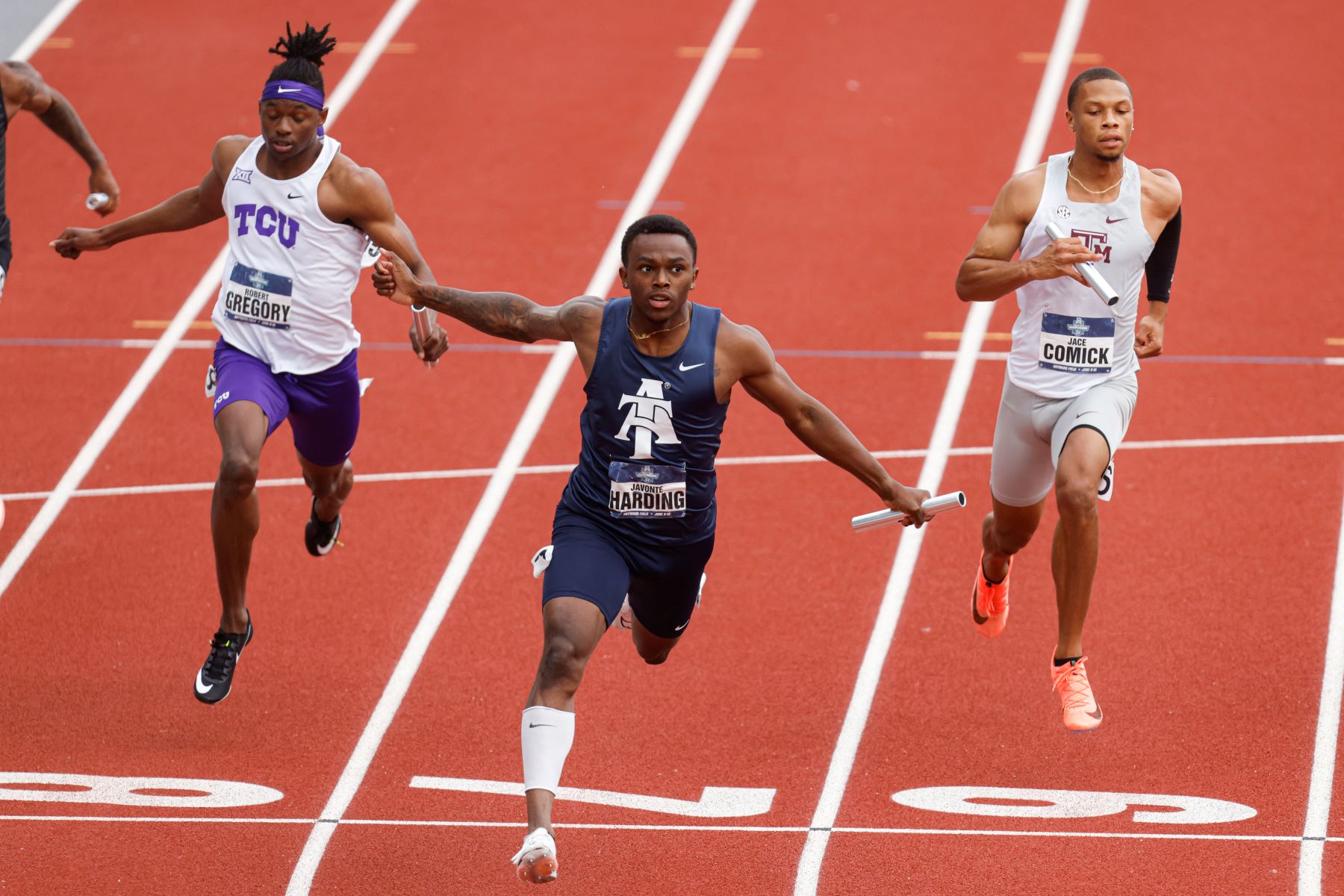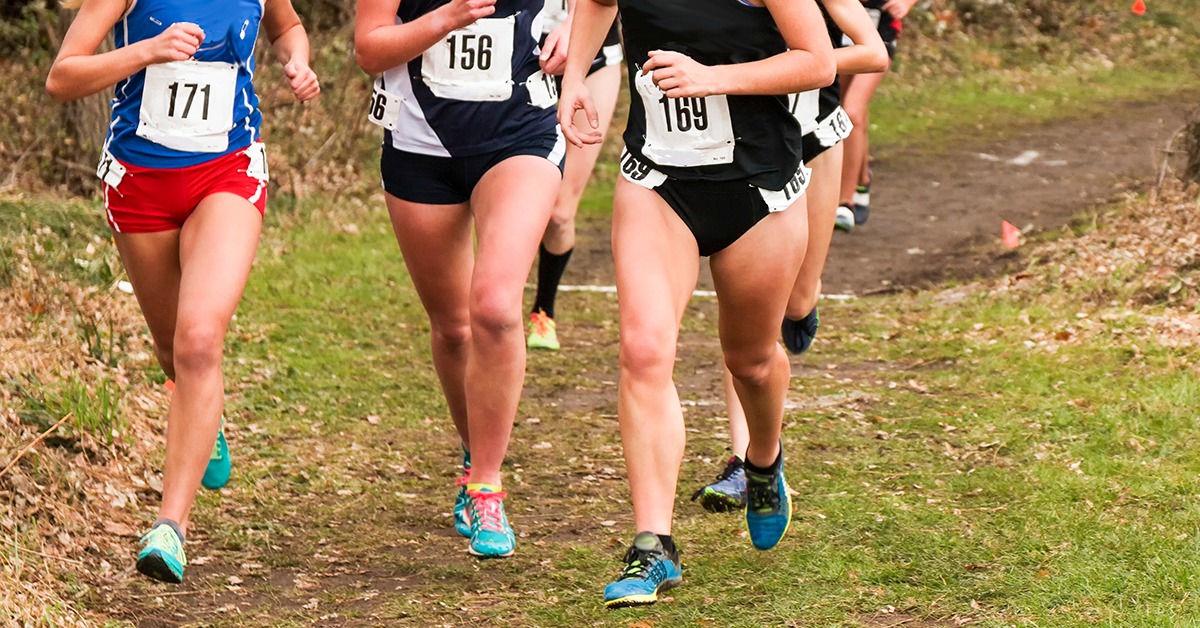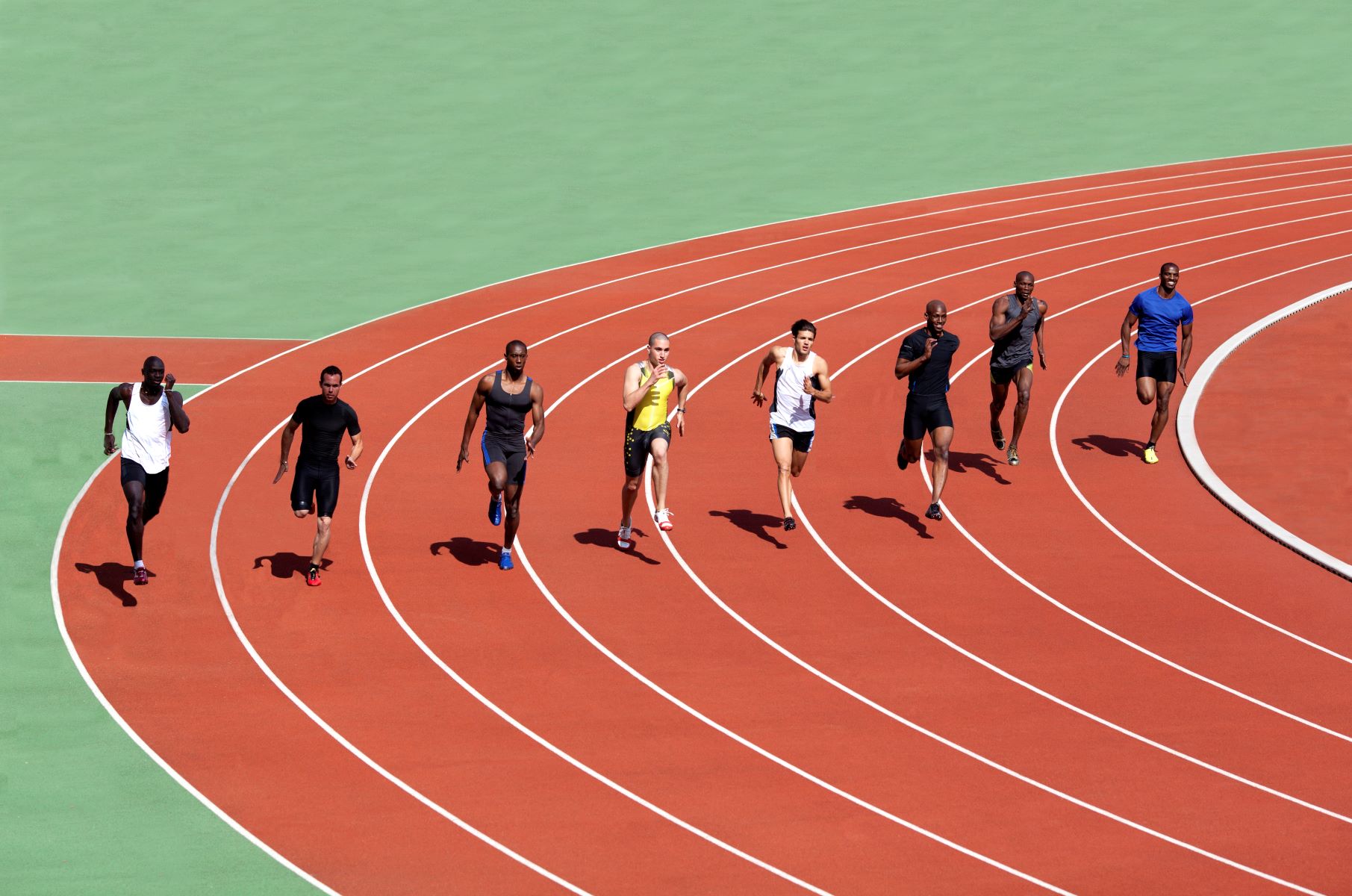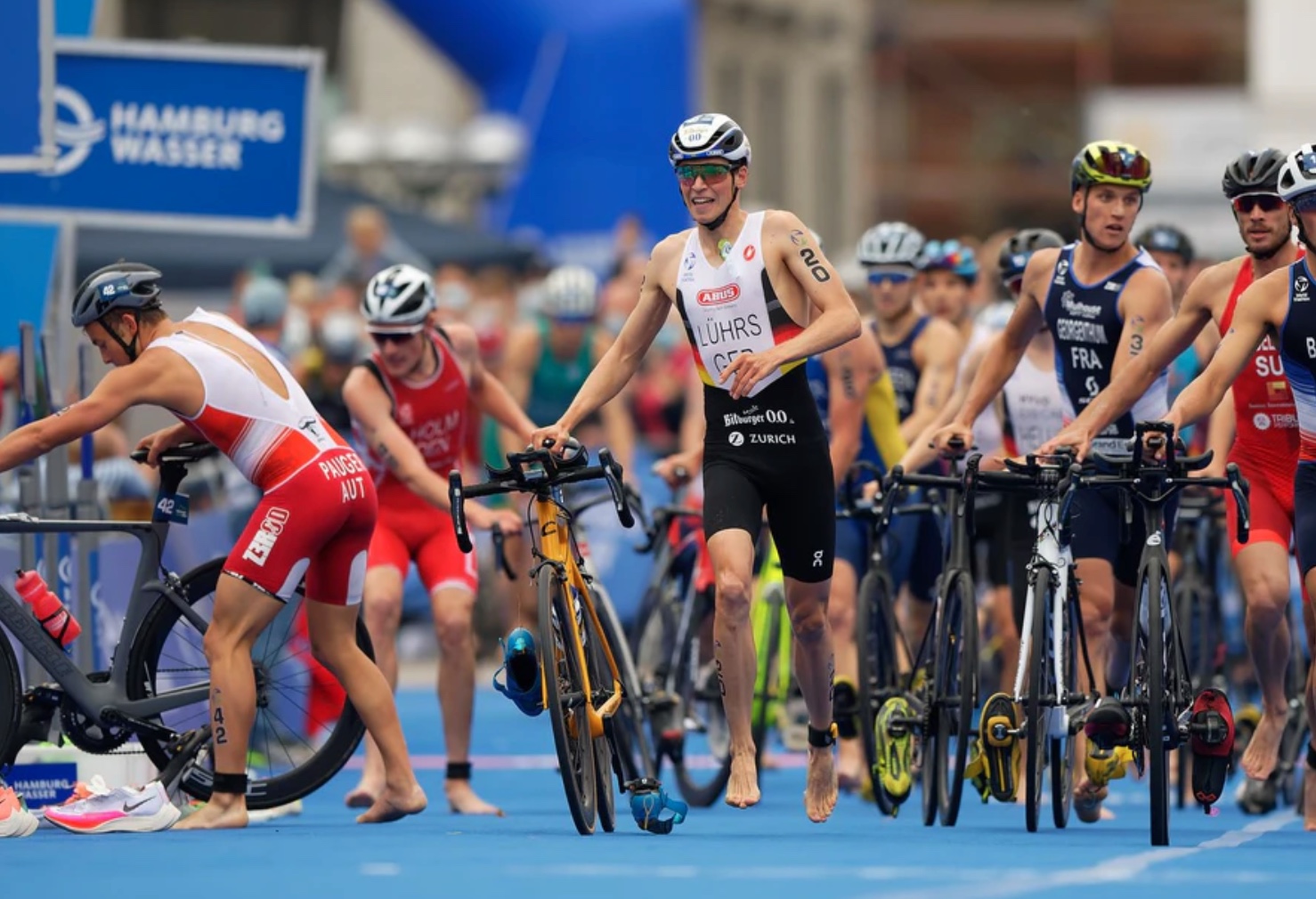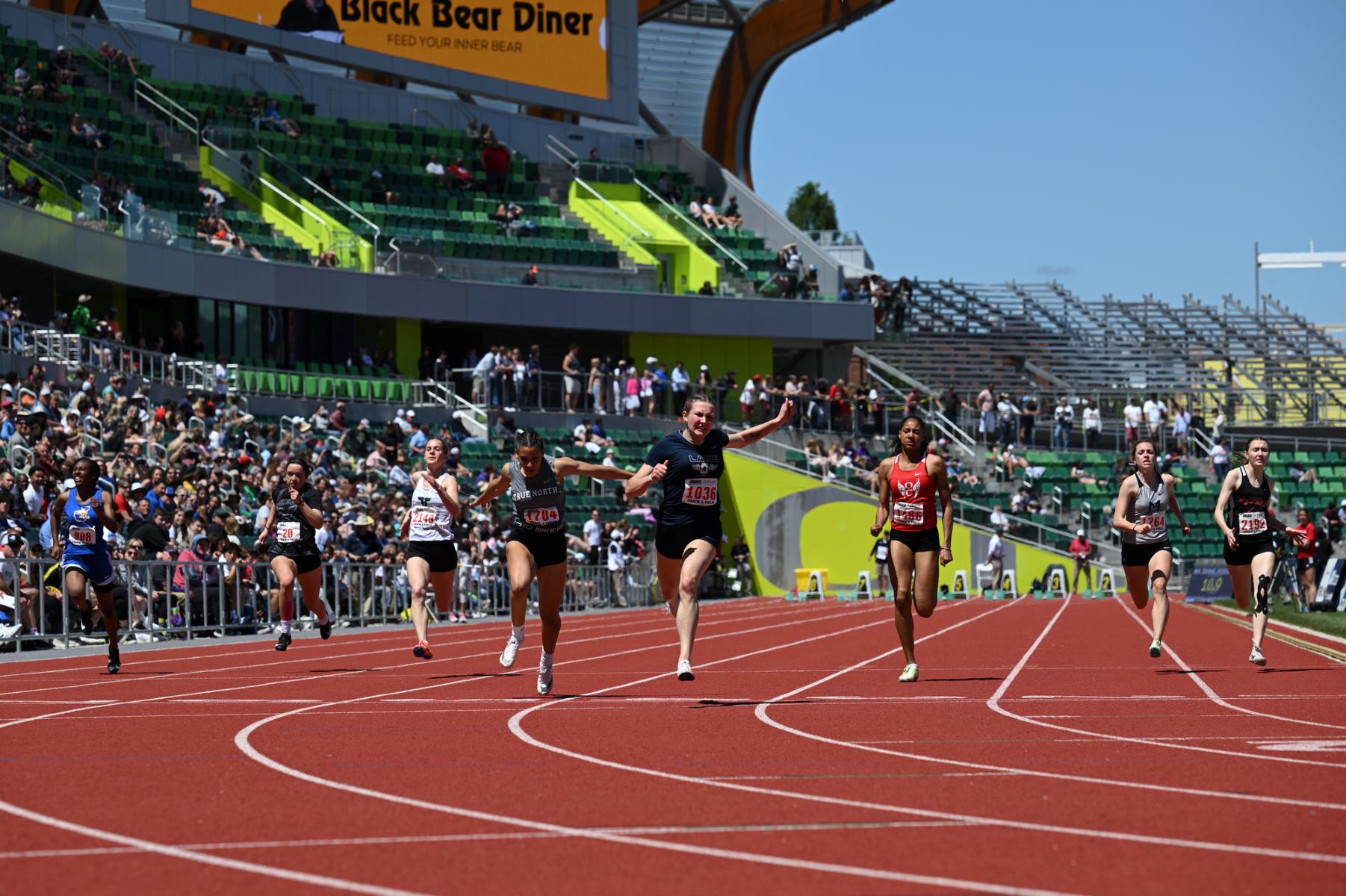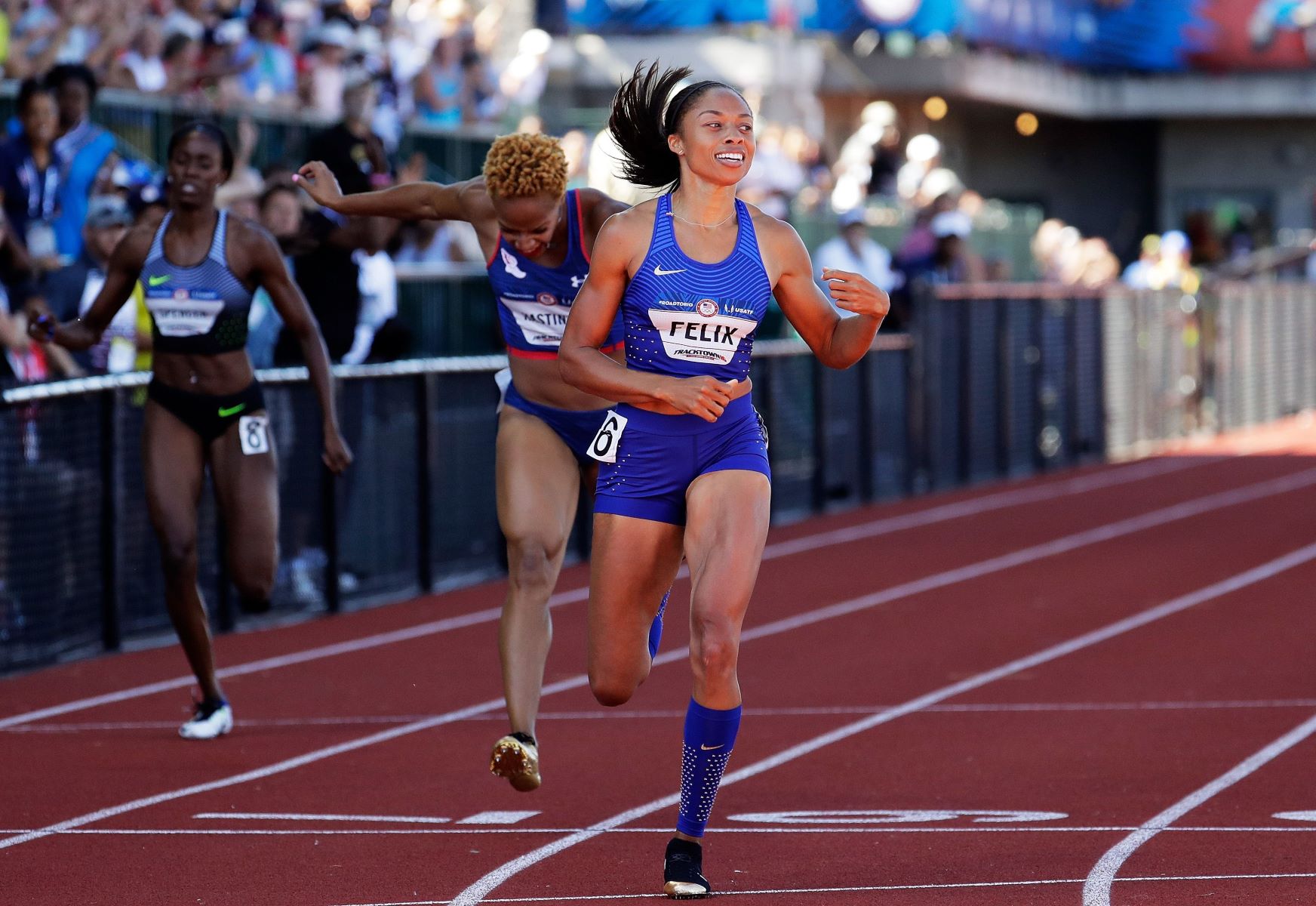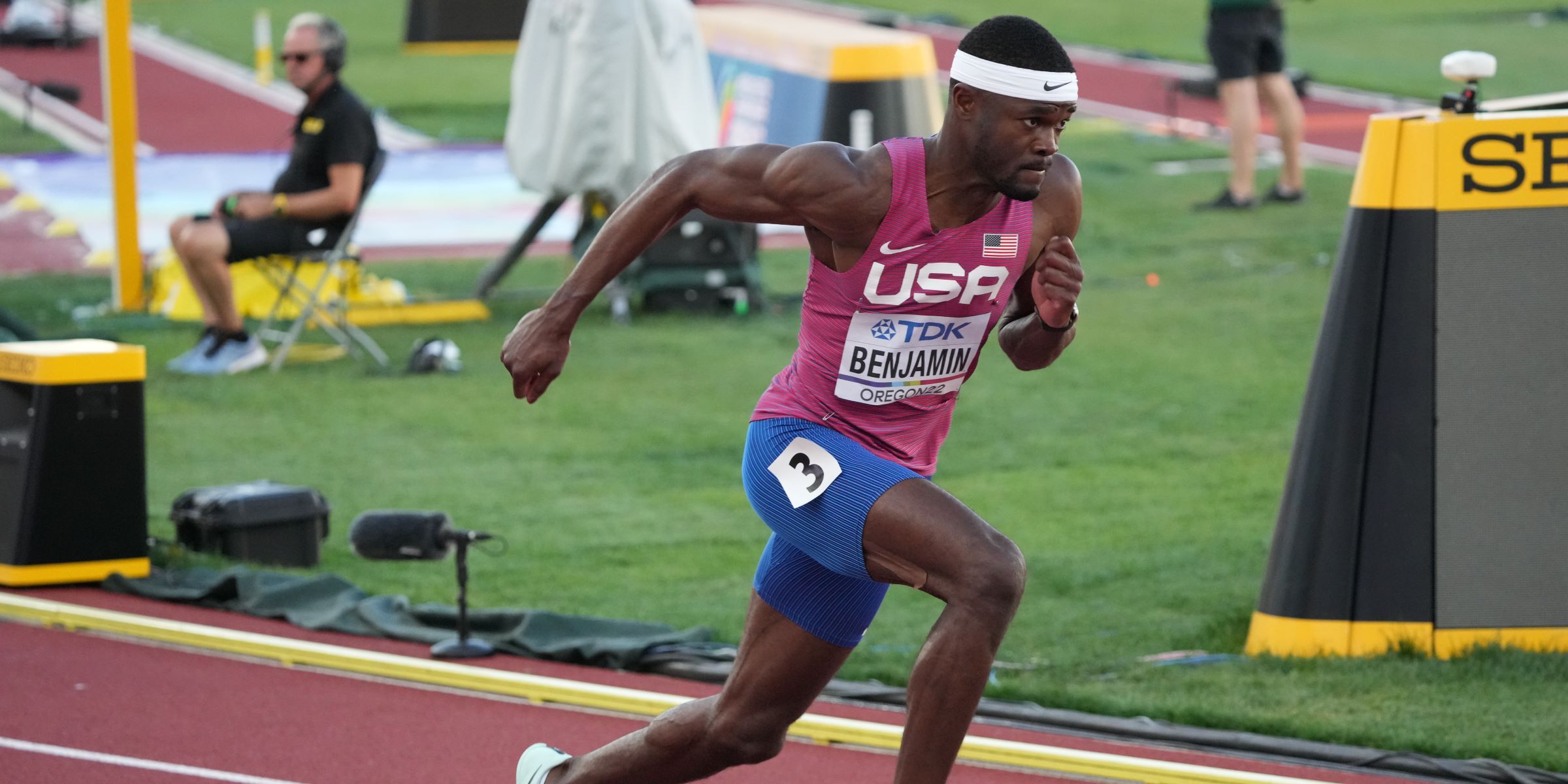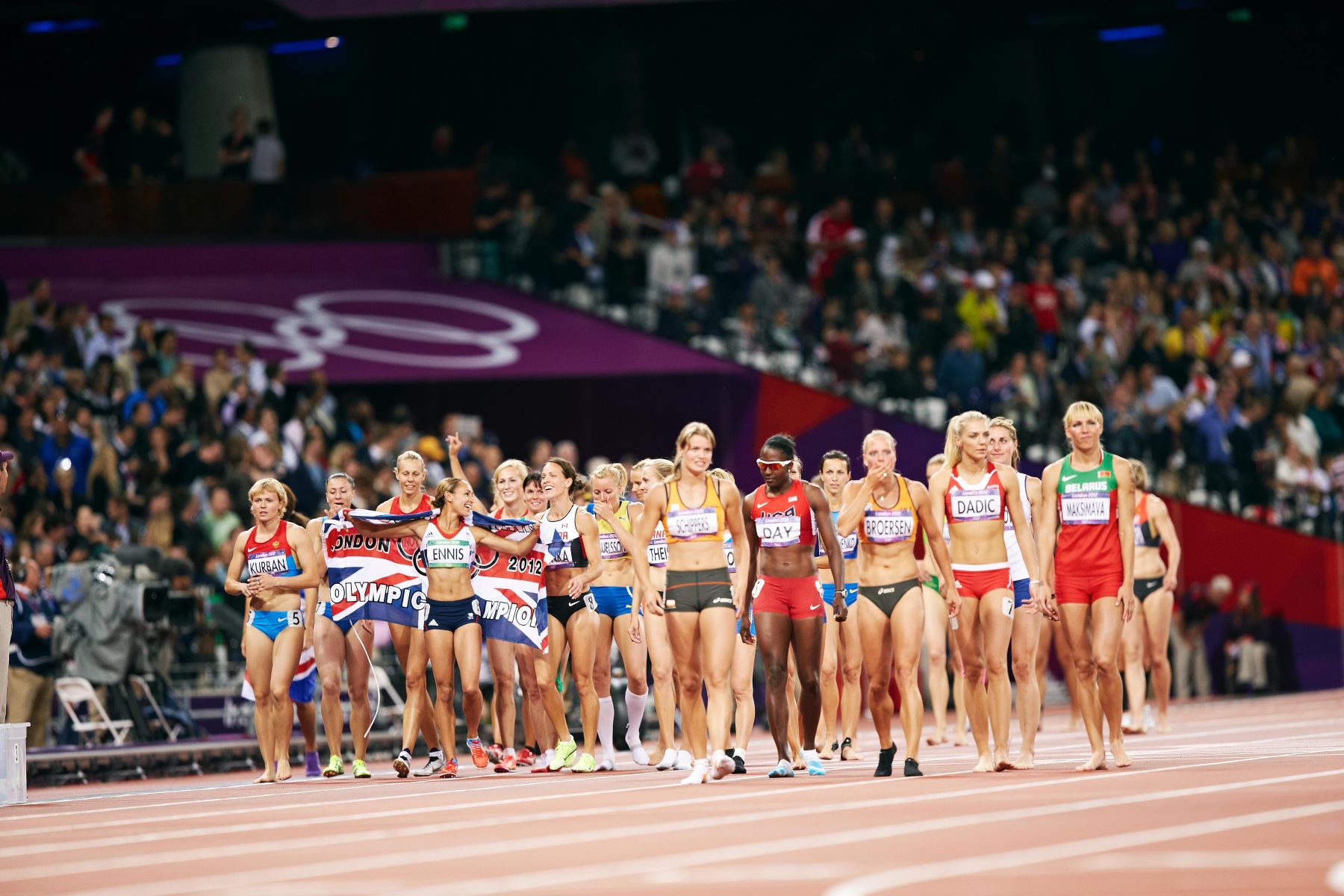Home>Misc>Featured>How Do You Qualify For National Champiosnhip In Cross Country


Featured
How Do You Qualify For National Champiosnhip In Cross Country
Modified: August 21, 2023
Learn how to qualify for the National Championship in cross country and get featured as a champion in the prestigious event.
How Do You Qualify For National Championship In Cross Country
Competing in a national championship in cross country is the epitome of an athlete’s career. It represents the culmination of hours of training, dedication, and passion for the sport. However, qualifying for such an esteemed event requires more than just raw talent and determination. Each national championship has its own set of rules and criteria for qualification, making the process both challenging and exciting. Let’s explore the different factors involved in qualifying for a national championship in cross country.
The first step towards qualifying for a national championship is to understand the structure and organization of the event. National championships in cross country are usually held at the collegiate level, with separate championships for each division (NCAA Division I, Division II, and NAIA) as well as competitions for junior colleges. Each division has its own qualifying process and criteria, so it’s essential to be aware of the specific requirements for the championship you aim to participate in.
Before attempting to qualify for a national championship, it’s important to consider some key factors. Firstly, you must have competitive times or rankings in previous races in order to be eligible for selection. The level of competition is extremely high at the national championship level, so athletes must consistently perform at a high level to be considered. Additionally, meeting the eligibility requirements set by the organizing body is crucial, including academic eligibility for collegiate championships.
There are different types of qualifying events that athletes can participate in to earn a spot in the national championship. These events can include conference championships, regional championships, and invitational races. Each division and conference may have its own specific qualifying events, so athletes must perform well in these events to earn the opportunity to compete at the national level.
Effective training and preparation are key components of qualifying for a national championship in cross country. Athletes must follow a rigorous training program that focuses on building endurance, speed, and strength. Additionally, proper nutrition, rest, and recovery are essential to perform at the highest level during qualifying races.
The qualifying standards and criteria vary depending on the division and championship level. For example, NCAA Division I requires athletes to meet a certain time standard in designated qualifying races, while NAIA may consider rankings and performance in conference championships. It’s important to thoroughly review and understand the specific qualifying standards and criteria for the championship you are aiming to qualify for.
In NCAA Division I, the qualifying process involves a combination of automatic and at-large selections based on the results of regional championships and a national projection index. Division II has a similar process, considering regional rankings and performance in championship races. The NAIA qualifying process involves using performance lists and conference championship results to determine eligibility for the national championship. Junior college nationals have their own set of qualifying events and criteria.
Qualifying for a national championship in cross country is a challenging and rewarding journey. It requires consistent dedication, hard work, and a strong performance in qualifying races. By understanding the structure, criteria, and requirements of the championship you aim to qualify for, you can maximize your chances of earning a spot in the prestigious event. So lace up your running shoes, hit the trails, and strive to achieve your goals on the road to a national championship!
Introduction
The journey to competing in a national championship in cross country is a dream that many athletes aspire to achieve. The pinnacle of the sport, these championships represent the ultimate test of endurance, skill, and determination. However, before athletes can compete on the grand stage, they must first navigate the qualifying process, which varies depending on the championship and division.
In this article, we will explore how athletes can qualify for a national championship in cross country. We will delve into the different factors that need to be considered, such as understanding the structure of the championship and the specific criteria and standards for qualification. Additionally, we will discuss the various types of qualifying events, the importance of effective training and preparation, as well as the qualifying processes for different divisions, including NCAA Division I, Division II, NAIA, and junior colleges.
Qualifying for a national championship in cross country is not a simple task. It requires a combination of talent, hard work, and strategic planning. Athletes need to consistently perform at a high level and showcase their abilities in competitive races. They must also ensure they meet the eligibility requirements set by the organizing body, including academic eligibility for collegiate championships.
Understanding the structure of the national championship is crucial. Collegiate championships are divided into different divisions, with each division having its own qualifying standards and process. NCAA Division I is known for its stringent qualifying criteria, requiring athletes to meet specific time standards in designated races. Division II and NAIA also have their own set of qualifying events and performance criteria. Additionally, athletes competing in junior colleges have their own pathway to qualifying for their national championship.
Aside from meeting the qualifying standards, effective training and preparation play a crucial role in an athlete’s journey to a national championship. Athletes must follow a rigorous training regimen that includes building endurance, speed, and strength. By focusing on these areas, athletes can improve their performance and increase their chances of qualifying for the championship.
In the following sections, we will explore the different types of qualifying events athletes can participate in, the specific qualifying standards and criteria for each division, and the processes involved in qualifying for the national championships. By gaining a comprehensive understanding of the road to a national championship in cross country, athletes can better position themselves for success and strive to achieve their dreams.
Understanding the National Championship in Cross Country
The national championship in cross country is the pinnacle event of the sport, where the best athletes from various divisions and conferences come together to compete for the ultimate honor. It is a showcase of talent, determination, and athletic prowess. Understanding the structure and significance of these championships is essential for any aspiring cross country athlete.
At the collegiate level, national championships in cross country are organized by different governing bodies, including the NCAA (National Collegiate Athletic Association) and the NAIA (NAIA Athletic Association). The championships are typically divided into different divisions based on the size and resources of the participating institutions.
The NCAA conducts national championships in three divisions: Division I, Division II, and Division III. Division I championships are known for their high level of competition and strict qualifying standards, while Division II championships provide a competitive platform for athletes from smaller institutions. Division III championships emphasize the balance between academics and athletics.
The NAIA, on the other hand, organizes national championships for smaller colleges and universities that are not part of the NCAA. These championships offer opportunities for athletes to showcase their skills and compete against top talent in their division.
Participating in a national championship in cross country provides a unique experience for athletes. It allows them to compete against the best runners from around the country, giving them exposure and the chance to establish themselves as elite athletes within their division.
Aside from the overall team championship, individual excellence is also recognized in these events. Outstanding performances in national championships can lead to individual accolades, such as All-American honors, which further elevates an athlete’s profile within the sport.
The locations and courses for national championships vary each year, providing new challenges for athletes. Some championships are held at renowned cross country courses, known for their difficulty and historic significance. These courses often pose a unique set of challenges, such as hilly terrain, uneven surfaces, and varying weather conditions.
Understanding the significance and prestige associated with national championships in cross country can serve as a driving force for athletes in their pursuit of excellence. It pushes them to train harder, improve their performances, and strive for qualification in these prestigious events.
In the following sections, we will delve deeper into the various factors that athletes need to consider when aiming to qualify for a national championship in cross country. This includes the different types of qualifying events, the importance of effective training and preparation, and the specific criteria for qualification in each division.
Factors to Consider Before Qualifying
Qualifying for a national championship in cross country is a rigorous and highly competitive process. Before embarking on the journey to secure a spot in these prestigious events, athletes must take into account several important factors that can significantly impact their chances of success.
One of the primary factors to consider is the level of competition. National championships attract the best runners from colleges and universities across the country. To be competitive at this level, athletes must consistently perform at a high standard in their respective conferences and divisions. This means consistently finishing among the top runners in races leading up to the championship.
Another critical consideration is meeting the eligibility requirements set by the organizing bodies. Collegiate championships may have specific academic eligibility criteria, such as maintaining a certain GPA or progressing towards a degree. It’s important for athletes to be aware of and fulfill these requirements to ensure their eligibility for competition.
Furthermore, athletes must carefully assess their physical and mental preparedness. Cross country races require a high level of endurance, speed, and mental toughness. Athletes need to focus on building their aerobic capacity, developing their speed, and improving their race tactics and mental fortitude to compete at the national level.
Closely related to physical preparation is injury prevention and recovery. High-intensity training and competition pose a risk of injuries, and athletes must take proactive steps to prevent and manage injuries. Incorporating proper warm-ups, cool-downs, strength training, and rest and recovery protocols into their training regimen is crucial to staying healthy and consistently performing at their best.
Additionally, athletes should carefully analyze their race strategy and tactics. Each race presents unique challenges in terms of terrain, weather conditions, and competition levels. Understanding how to adapt their strategy and make tactical decisions during a race can make a significant difference in their performance and chances of qualifying for a national championship.
Finally, athletes must consider the time commitment and support system required to excel in cross country. Balancing the demands of training, competition, academics, and other commitments can be challenging. Having a strong support system, including coaches, teammates, and family, can provide the necessary encouragement, guidance, and assistance throughout the qualification process.
Considering these factors before embarking on the journey to qualify for a national championship in cross country will help athletes set realistic expectations and strategize their training and competition plans effectively. By addressing these considerations, athletes can enhance their chances of success and make the most of the opportunity to compete against the best in the country.
Type of Qualifying Events
Qualifying for a national championship in cross country involves participating in various types of qualifying events. These events serve as a platform for athletes to showcase their abilities and earn their spot in the prestigious championship. Let’s explore the different types of qualifying events that athletes may encounter on their journey to national qualification.
Conference Championships: Conference championships are an essential component of the qualifying process, particularly at the collegiate level. Each conference holds its own championship, bringing together teams and athletes from schools within the conference. The performance and rankings in these championships are often crucial in determining eligibility for the national championship.
Regional Championships: Regional championships provide another opportunity for athletes to qualify for the national championship. Athletes from different conferences and schools within a designated region compete against each other to earn a spot in the national event. These championships are highly competitive, and strong performances here can significantly enhance an athlete’s chances of qualifying.
Invitational Races: Invitational races are an integral part of the qualifying process, especially for individual athletes. These races are often open to competitors from various schools and provide an opportunity to compete against a diverse field of runners. Strong performances in invitational races can catch the attention of selectors and boost an athlete’s chances of receiving an invitation to the national championship.
Time Trials: Some qualifying events may consist of time trials, where athletes compete against the clock to achieve qualifying times. These time standards are often set by the organizing body and must be met for an athlete to be eligible for national championship selection. Time trials can take place in various settings, such as track meets or specific cross country courses.
Selection Races: In some cases, national championship selection is determined through a series of races specifically designated as selection races. Athletes compete head-to-head in these races, and their performances and rankings in these events are considered in the selection process. These races provide a direct opportunity for athletes to demonstrate their abilities and secure a spot in the national championship.
It’s important for athletes to thoroughly research and understand the specific types of qualifying events that are relevant to their division and championship. Each division and organizing body may have its own set of qualifying events and criteria. By participating strategically in these events and performing well, athletes can increase their chances of meeting the qualification standards and earning their place in the national championship.
Coaches and team advisors are valuable resources in helping athletes navigate the qualifying events and determine the best approach to participation. They can provide guidance on which events to target, create race strategies, and tailor training plans to maximize performance and increase the likelihood of qualifying for the national championship.
By taking advantage of the different types of qualifying events available, cross country athletes can demonstrate their skills, compete against strong competition, and secure their chance to compete at the revered national championship.
Effective Training and Preparation
Effective training and preparation are essential components for cross country athletes aiming to qualify for a national championship. The road to the championship requires dedication, hard work, and a well-designed training regimen. Let’s explore the key elements of effective training and preparation for national championship qualification in cross country.
Building Endurance: Endurance is a critical aspect of cross country running. Athletes must develop a strong aerobic base to handle the long distances and challenging terrains often encountered in cross country races. Training runs should focus on gradually increasing mileage, incorporating long runs, tempo runs, and interval training to enhance cardiovascular capacity and endurance.
Speed Development: While endurance is crucial, it’s also essential for athletes to develop speed. Incorporating speed workouts into training plans helps athletes improve their race pace and finish strong. Interval training, such as track workouts and fartleks, can help athletes increase their speed and build the necessary anaerobic capacity to excel in races.
Strength Training: Cross-country running requires more than just strong cardiovascular fitness. Athletes should also incorporate strength training exercises into their routine to build muscular strength and stability. Focusing on core exercises, leg strength, and functional movements helps prevent injuries and improve overall performance on the cross country course.
Proper Nutrition: Fueling the body with the right nutrients is crucial for optimal performance. Athletes must maintain a well-balanced diet that includes carbohydrates, proteins, healthy fats, and plenty of fruits and vegetables. Staying hydrated before, during, and after workouts is also essential to support the body’s endurance and recovery.
Rest and Recovery: Rest is as important as training when it comes to preparing for a national championship. Adequate rest and recovery allow the body to repair and adapt to the training stress, reducing the risk of injuries and promoting overall performance improvement. Cross training activities, such as swimming or cycling, can complement rest days and aid in recovery.
Mental Preparation: Mental toughness is critical in cross country running. Developing mental strategies, such as visualization and positive self-talk, can help athletes overcome challenges during races. Setting clear goals and maintaining a positive mindset are also integral to effective mental preparation.
Monitoring Progress: Tracking progress is essential to assess training effectiveness and make any necessary adjustments. Recording race times, monitoring heart rate during workouts, and keeping a training journal can help athletes identify strengths and weaknesses, allowing them to refine their training plans accordingly.
Incorporating these elements into a well-structured training plan is key to effective preparation for a national championship in cross country. It’s crucial for athletes to work closely with coaches and seek guidance from sports professionals to tailor training plans to their individual needs and goals.
Training and preparation should be a progressive process, with gradual increases in intensity and mileage to prevent overtraining and reduce the risk of injuries. A balanced approach that includes a mix of easy runs, long runs, interval training, strength training, and proper recovery will optimize an athlete’s performance and increase their chances of qualifying for the national championship.
By focusing on effective training and preparation, cross country athletes can enhance their physical capabilities, mental resilience, and overall performance, increasing their chances of achieving their goal of qualifying for the prestigious national championship.
Qualifying Standards and Criteria
Qualifying for a national championship in cross country requires meeting specific standards and criteria set by the organizing bodies. These standards vary depending on the division and championship level, and it’s crucial for athletes to thoroughly understand and meet the qualifying requirements. Let’s explore the qualifying standards and criteria for different divisions in collegiate cross country.
NCAA Division I: NCAA Division I championships have some of the most stringent qualifying standards in cross country. Athletes must meet designated time standards or achieve sufficient rankings in designated qualifying races. Automatic qualifiers are determined based on performances in regional championships, where athletes must finish within a certain position or time threshold. Additionally, at-large selections may be made based on a national projection index, which considers a combination of rankings, times, and head-to-head competition results.
NCAA Division II: Division II qualifying standards are slightly more lenient compared to Division I. Athletes must achieve qualifying times or rankings in designated races, often including regional championships. The number of individual qualifiers varies by region, with athletes who do not automatically qualify having the opportunity to receive selection through at-large bids based on performance and rankings.
NAIA: The NAIA has its own set of qualifying standards and criteria for the national championship. Qualification is typically determined using performance lists, which rank athletes based on their season-best times or distances. Additionally, conference championship results are often considered in the selection process. The number of qualifiers from each conference and the performance threshold for automatic qualification may vary from year to year.
Junior College Nationals: Qualifying for the junior college national championship also follows specific criteria. Athletes must compete in designated regional championship races and achieve qualifying times or rankings. The exact qualification standards and procedures vary by region and are often determined by the governing body for that specific region.
It’s important for athletes to carefully review the qualifying standards and criteria for the specific championship they are aiming to qualify for. This information can typically be found on the official websites of the organizing bodies or through communication with coaches and team advisors.
Meeting the qualifying standards requires consistent and strong performances in races leading up to the national championship. Athletes must strategically select races that align with the qualification criteria and optimize their chances of meeting the required times or rankings. Developing race strategies, focusing on peak performances, and maximizing potential scoring opportunities are key elements in the qualifying process.
By understanding and meeting the qualifying standards and criteria, cross country athletes position themselves for the opportunity to compete at the national championship. It is essential for athletes to stay updated with any changes to the qualifying procedures and maintain open communication with coaches and governing bodies to ensure they meet the necessary requirements for qualification.
Qualifying for a national championship is a challenging but rewarding achievement. By setting goals, consistently training at a high level, and meeting the specific standards and criteria, athletes increase their chances of excelling in their pursuit of a national championship in cross country.
NCAA Division I Qualifying Process
The NCAA Division I cross country championships are highly competitive events that require athletes to meet specific qualifying standards to earn a spot in the prestigious competition. The qualifying process for Division I championships involves a combination of automatic qualifiers and at-large selections based on performance and rankings. Let’s explore the qualifying process for NCAA Division I cross country championships.
Automatic Qualifiers: Automatic qualification for the NCAA Division I championships is primarily determined through the regional championships. Each region has a designated number of automatic qualifying spots based on factors such as the number of participating teams and historical performance. To secure an automatic qualifying spot, athletes must finish within a certain position or time threshold in their respective regional championship race.
At-Large Selections: In addition to automatic qualifiers, a number of at-large selections are made to complete the field for the NCAA Division I championships. At-large selections are determined based on a national projection index, which takes into account a combination of rankings, times, and head-to-head competition results throughout the season. The index is calculated by the NCAA selection committee and serves as a tool to compare athletes from different regions and conferences.
Selection Process: The selection process for at-large bids begins immediately after the regional championships. The selection committee reviews the results of regional championships and factors in the national projection index to determine the at-large selections. Athletes who have consistently performed well throughout the season and have strong rankings in comparison to other competitors in their division may be considered for at-large bids.
Factors Considered: Several factors are taken into consideration during the selection process. Performance in the regional championship is a significant factor, as it serves as a direct indicator of an athlete’s current form and competitiveness against regional opponents. The national projection index helps assess athletes’ relative performance and rankings, considering their performances in various races leading up to the selection process.
Team Qualification: In addition to individual qualification, teams can also earn their spot in the NCAA Division I championships. The top teams from each region, based on their performance in the regional championships, earn automatic qualification. Furthermore, at-large bids are extended to teams that show exceptional performance and rankings throughout the season.
It’s important for athletes aspiring to qualify for the NCAA Division I championships to closely follow the qualifying process and stay updated on any changes or updates by the NCAA. Communication with coaches, participation in designated qualifying races, and consistently strong performances throughout the season are key to increasing the chances of earning a spot in the championships.
The NCAA Division I cross country championships provide an opportunity for athletes to compete against the best runners in the country. By meeting the qualifying standards and excelling in the selection process, athletes can showcase their talents and compete for the ultimate honor in Division I cross country.
NCAA Division II Qualifying Process
Qualifying for the NCAA Division II cross country championships is an achievement that requires athletes to meet specific standards and criteria. The Division II qualifying process involves a combination of automatic qualifiers and at-large selections based on performance and rankings. Let’s explore the qualifying process for NCAA Division II cross country championships.
Automatic Qualifiers: Automatic qualification for the NCAA Division II championships is primarily determined through the regional championships. Each region has a designated number of automatic qualifying spots based on factors such as the number of participating teams and historical performance. Athletes must finish within a certain position or time threshold in their respective regional championship race to secure an automatic qualifying spot.
At-Large Selections: In addition to automatic qualifiers, at-large selections are made to complete the field for the NCAA Division II championships. At-large selections are determined based on regional rankings and season-long performances. The selection committee reviews the regional rankings, considers head-to-head competition results, and assesses the overall competitiveness and strength of individual athletes and teams to determine the at-large selections.
Selection Process: The selection process for at-large bids begins immediately after the regional championships. The selection committee reviews the results of regional championships and factors in the regional rankings to determine the at-large selections. Athletes who have consistently performed well throughout the season and have strong rankings in comparison to other competitors in their region may be considered for at-large bids.
Factors Considered: Several factors are taken into consideration during the selection process. Performance in the regional championship is a significant factor, as it serves as a direct indicator of an athlete’s current form and competitiveness against regional opponents. The regional rankings, which consider performances in designated qualifying races, are also a key factor in the selection process.
Team Qualification: Teams can also earn their spot in the NCAA Division II championships through a similar qualifying process. The top teams from each region, based on their performance in the regional championships, earn automatic qualification. At-large bids are extended to teams that demonstrate exceptional performance and rankings throughout the season but did not secure an automatic qualifying spot.
It’s important for athletes aspiring to qualify for the NCAA Division II championships to closely follow the qualifying process and stay updated on any changes or updates by the NCAA. Communication with coaches, participation in designated qualifying races, and consistently strong performances throughout the season are key to increasing the chances of earning a spot in the championships.
The NCAA Division II cross country championships provide an avenue for athletes to compete against high-level competition. By meeting the qualifying standards and excelling in the selection process, athletes can showcase their talents and vie for the ultimate honor in Division II cross country.
NAIA Qualifying Process
The NAIA (National Association of Intercollegiate Athletics) has its own qualifying process for the NAIA cross country championships. The NAIA qualifying process is designed to identify the top performers from member institutions and provide them with the opportunity to compete for a national title. Let’s explore the qualifying process for the NAIA cross country championships.
Performance Lists: The NAIA cross country qualifying process involves the use of performance lists. These lists rank athletes based on their season-best times or distances in designated qualifying races. The performances are analyzed to determine the athletes who have the potential to excel and contribute to the competitiveness of the national championship.
Conference Championships: Conference championship results play a significant role in the NAIA qualifying process. The performances of athletes and teams in these championships are often considered in the selection of participants for the national championship. Strong performances in conference championships can enhance an athlete’s chances of qualifying for the NAIA cross country championships.
At-Large Selections: In addition to automatic qualifiers, the NAIA cross country championships also feature at-large selections. At-large bids are extended to individuals and teams who have demonstrated exceptional performance throughout the season but did not secure an automatic qualifier spot. The selection committee reviews the performance lists and considers factors such as rankings, head-to-head competition results, and performances in conference championships to determine the at-large selections.
Qualification Criteria: The exact qualification criteria for the NAIA cross country championships can vary from year to year. It is essential for athletes and coaches to stay updated and closely follow the guidelines set by the NAIA. The qualification criteria may include specific time standards or performance thresholds that athletes must meet to be eligible for selection.
It’s important for athletes aspiring to qualify for the NAIA cross country championships to closely follow the qualifying process and stay updated on any changes or updates by the NAIA. Communication with coaches, participation in designated qualifying races, and consistently strong performances throughout the season are key to increasing the chances of earning a spot in the championships.
The NAIA cross country championships provide an opportunity for athletes from member institutions to showcase their skills and compete against top competition. By meeting the qualifying standards and excelling in the selection process, athletes can demonstrate their capabilities and strive for success in the NAIA cross country championships.
Competing in Junior College Nationals
For athletes in junior college, competing in the national championships is a significant achievement and a stepping stone towards their future athletic endeavors. The Junior College Nationals provides these athletes with the opportunity to showcase their talents and compete against top competition from other junior colleges. Let’s explore what it takes to compete in Junior College Nationals.
Qualifying Events: The road to Junior College Nationals begins with the qualifying events. These events are typically regional championships where athletes compete against others from their region. The performances in these championships determine the eligibility for the national championships. Each region may have its own specific qualifying races and criteria, which athletes must meet to earn a spot in the national championships.
Performance Standards: In addition to the regional championships, athletes must achieve specific performance standards to qualify for Junior College Nationals. These standards may vary from year to year and can be based on times, distances, or rankings. Athletes must achieve or surpass these standards to earn their place in the national championship field.
Team Qualification: Junior College Nationals also includes team competitions, where teams from different junior colleges compete against each other. The top teams from each region, based on their performance in the regional championships, earn automatic qualification for the national championships. Teams that do not secure automatic qualification may still have the opportunity to receive at-large bids based on their overall performance and rankings.
Multi-Events: In addition to individual races, Junior College Nationals also features multi-event competitions, such as combined events or relays. Athletes who excel in these multi-events have the opportunity to compete at the national level. The qualification process for these events may involve specific qualifying standards or performances in designated competitions.
Preparation and Training: Competing at Junior College Nationals requires dedicated training and preparation. Athletes must follow a structured training program that includes specific workouts tailored to their event(s) and individual needs. Cross country runners must focus on building endurance, speed, and race tactics, while field event athletes need to work on technique, strength, and explosiveness. By maintaining a disciplined training regimen and seeking guidance from coaches, athletes can optimize their performance and prepare for the national stage.
Goal-Setting and Mindset: A crucial aspect of competing at Junior College Nationals is the athletes’ mindset and goal-setting. They must set realistic but challenging goals, both individually and as a team. Developing a positive, focused mindset and confidence in their abilities is key to performing at their best during the national championships.
By qualifying and competing in Junior College Nationals, athletes have the opportunity to gain valuable experience, showcase their talent, and potentially catch the attention of coaches from four-year institutions. For many athletes, Junior College Nationals serves as a stepping stone towards furthering their athletic career and potentially earning scholarships or opportunities to compete at higher levels.
Whether it’s achieving personal bests, contributing to the team’s success, or simply experiencing the thrill of competing at the national level, Junior College Nationals presents an exciting opportunity for junior college athletes to leave their mark on the cross country landscape.
Conclusion
Qualifying for a national championship in cross country is a remarkable achievement that requires dedicated training, consistent performances, and a strong understanding of the qualifying process. Whether competing at the NCAA Division I, Division II, NAIA, or junior college level, the journey to a national championship demands hard work, perseverance, and a determination to excel.
Understanding the structure of the championships, the qualifying standards, and the criteria is crucial for athletes aiming to secure their spot in the prestigious events. From conference championships and regional competitions to time trials and selection races, each division and organizing body has its own unique requirements and processes for qualification.
While the qualification process poses its challenges, effective training and preparation are key to success. Athletes must focus on building endurance, speed, and strength, while also taking care of their nutrition and recovery. Mental preparation, setting goals, and developing a positive mindset are also integral components of the journey to qualification.
With careful planning, consistent performances, and strong support systems, athletes can navigate the qualifying process and increase their chances of participating in a national championship. These championships offer a platform to compete against the best runners in the country, gain exposure, and potentially earn recognition and awards for their individual performances.
It’s important for athletes to keep in mind that qualification for a national championship is not solely about the end goal, but also about the growth and development achieved throughout the journey. The process of striving for qualification pushes athletes to continuously improve, both physically and mentally, and sets a strong foundation for future success in the sport.
Whether an athlete ultimately qualifies for a national championship or not, the journey itself is a testament to their dedication, perseverance, and passion for cross country. Each step taken towards qualification represents countless hours of training, sacrifices, and unwavering commitment to the sport they love.
In conclusion, qualifying for a national championship in cross country is a remarkable achievement that requires a combination of physical prowess, mental resilience, and strategic planning. With the right mindset, effective training, and a thorough understanding of the qualifying process, athletes can position themselves for success and realize their dreams of competing at the highest level of collegiate or junior college cross country.
